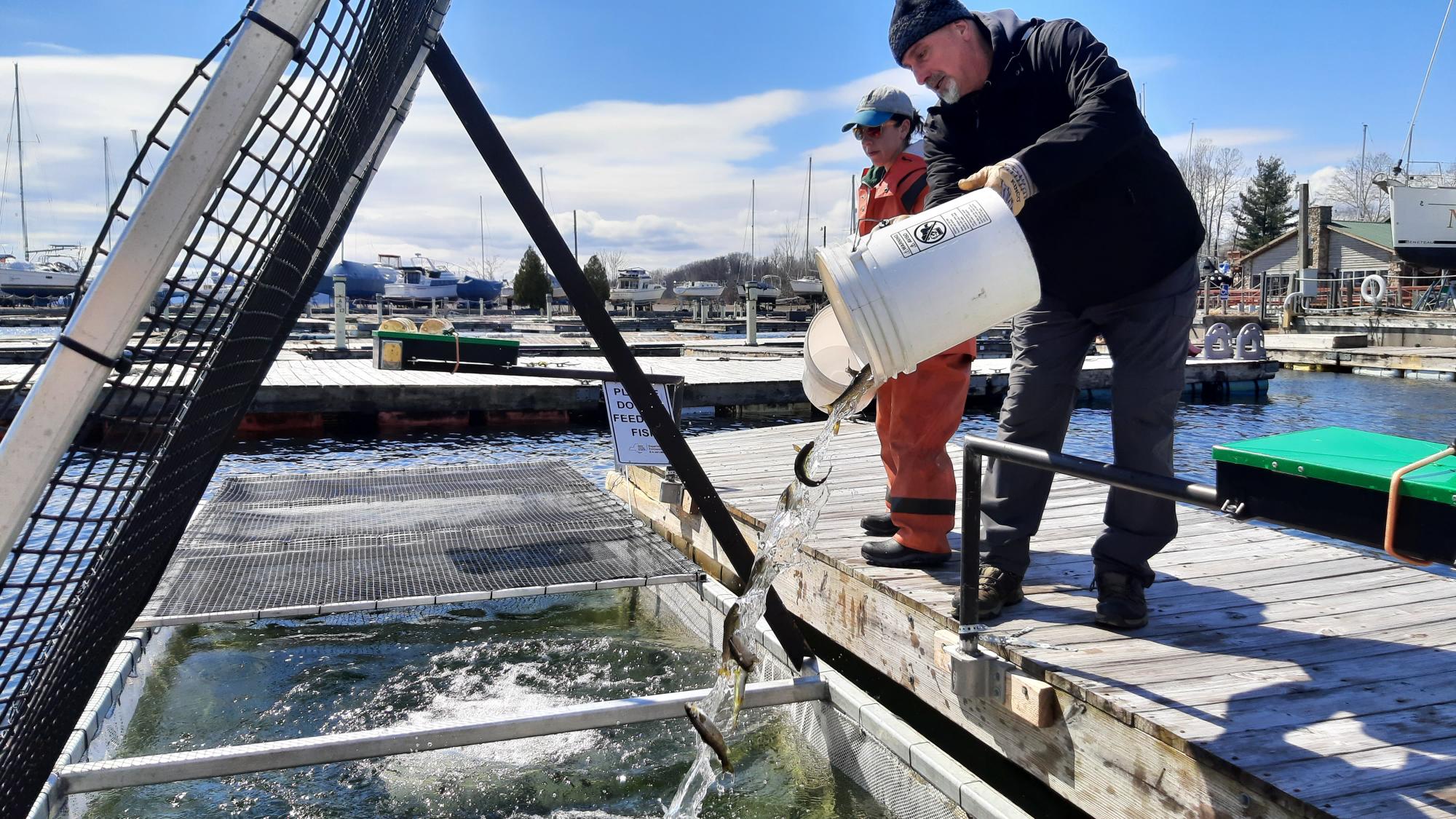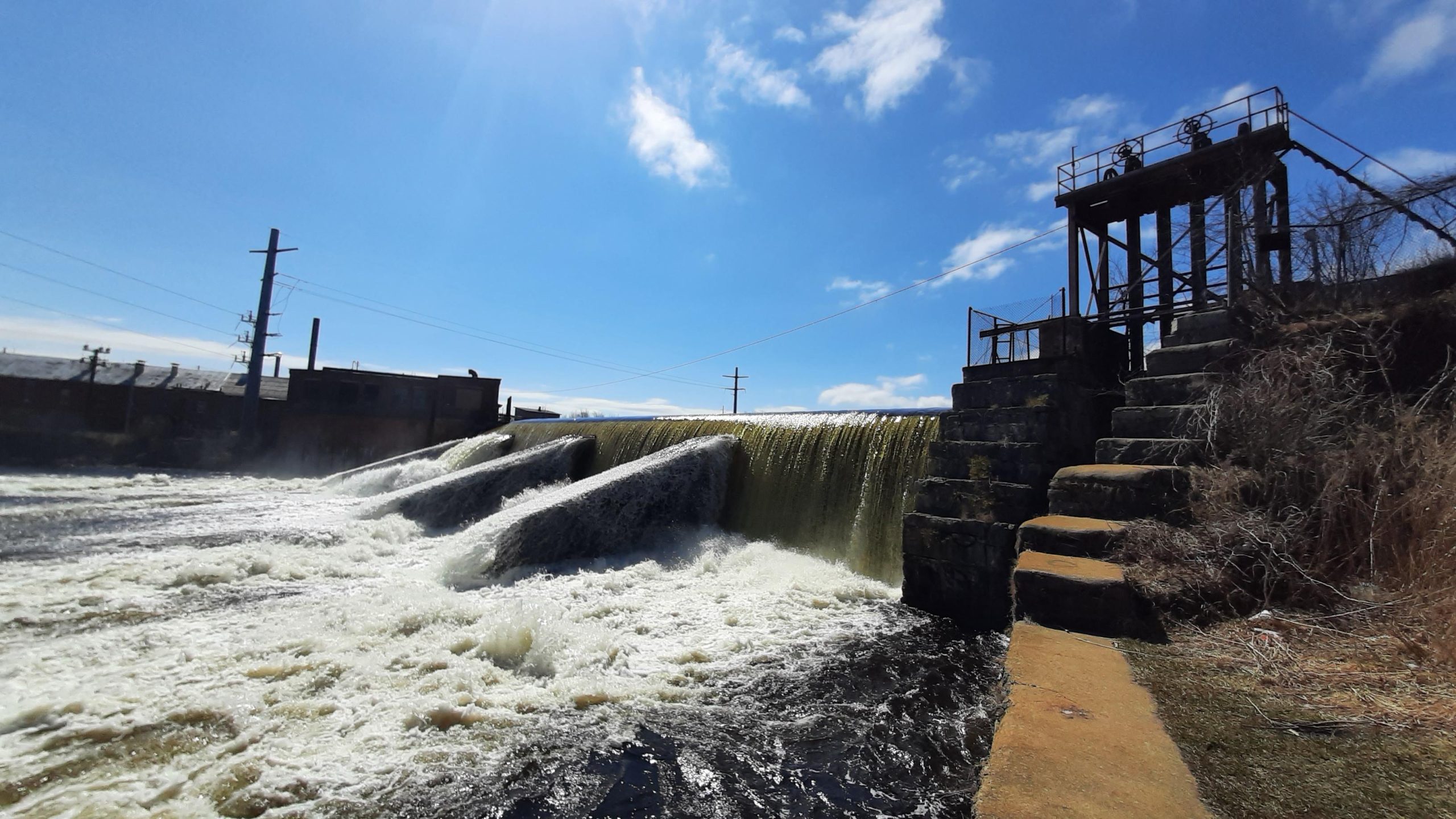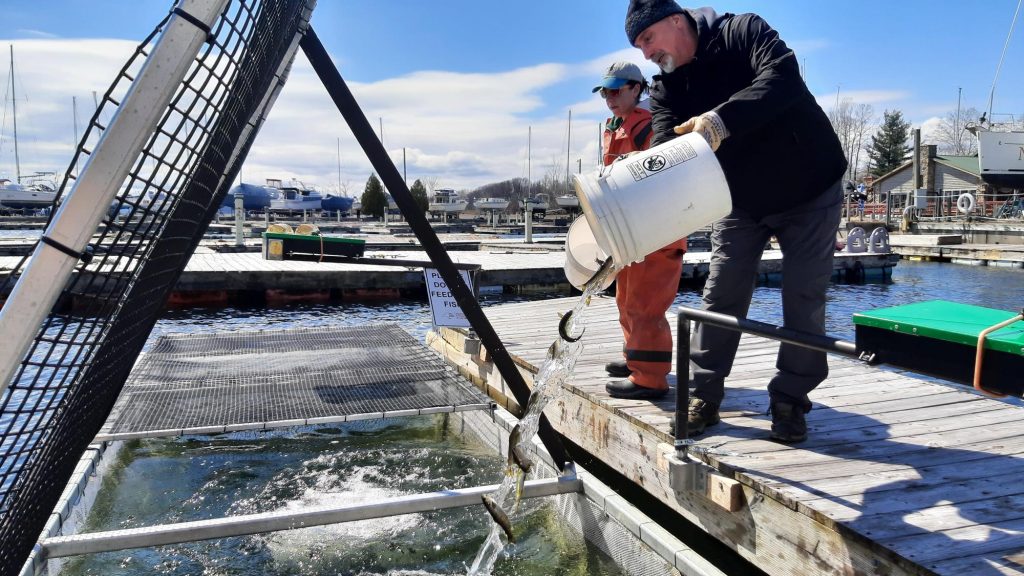By John Davis – Rewilding Advocate
Friday, May 16, 2025
Rewilding is about free will and prosperity for all, particularly keystone and wide-ranging animals like salmon and wolves. Tragically, wolves and salmon were effectively eradicated from northern New York by colonizing Euro-Americans, and are struggling to return.
Even more fragmented and damaged than most terrestrial ecosystems are most freshwater ecosystems. Freshwater fish include many of Earth’s most endangered species. Although neither the US Fish & Wildlife Service nor the International Union for the Conservation of Nature consider Salmo salar an endangered species, Atlantic Salmon are numerically endangered in much of their native range and ecologically extinct in many eastern US watersheds. Especially imperiled are freshwater varieties (possibly subspecies) of Atlantic Salmon.

Also badly diminished by habitat fragmentation, particularly in the form of dams, and by past over-exploitation, and now also by climate chaos, are native trout. Brook and Lake Trout were harmed by acid rain. That crisis was mitigated by the Clean Air Act but could return, if anti-government extremists prevail. Meanwhile, warming waters from global overheating now threaten Brook and Lake Trout in water bodies lacking cold water refugia.
To its discredit, the New York Department of Environmental Conservation has made matters worse for native fish by stocking exotic fish species in many water bodies across the state, which then compete with, or even eat, native fish. To its credit, NYDEC is now making valiant efforts to restore salmon and trout. Although these may grow into genuine rewilding efforts, they begin with technically-complicated hatchery production of Atlantic Salmon, Brook and Lake Trout, and other diminished species, and they entail heavy, repeated stocking.

Present efforts to restore landlocked Atlantic Salmon in Lake Champlain and its tributaries illustrate the paradoxical nature of some aquatic rewilding work. With mixed results, and in cooperation with federal and Vermont wildlife officials, DEC has for some years been releasing Atlantic Salmon smolt, from a hatchery in Vermont, into the Lower Saranac River on the west side of Lake Champlain. More recently, the New York and Vermont wildlife agencies, with assistance from US Fish & Wildlife Service, have been trying “pen-releases” of Atlantic Salmon smolt at the mouth of the Saranac. The idea is that smolt kept there at the mouth for a short while may imprint on the river and return to it, come spawning time.
Adding to the paradoxes of this fish restoration effort is that Atlantic Salmon trying to spawn in the Saranac River quickly run into the first and worst obstacle in the river, Imperial Dam, a deteriorating hulk of concrete that no fish (except possibly an agile American Eel) can scale. Contrary to its good restorative work for native fish, DEC has decided to retrofit rather than remove this fatal dam, saying the dam will let salmon pass once a good fish ladder is installed.

Don Lee of Lake Champlain Trout Unlimited has well explained why this artificial barricade is so harmful:
“Imperial Dam is the only barrier to prevent today’s salmon from reaching their historic natural habitat and spawning area on the Saranac River at Kent Falls. Even though it is only thirteen miles to Kent Falls, a natural barrier to Atlantic Salmon, the Saranac River historically produced the largest runs of all rivers in the Lake Champlain watershed.”
All who care about native fish and other wildlife can help. Follow the good work of Trout Unlimited’s Lake Champlain chapter, Boquet River Association, Ausable Freshwater Center, and The Nature Conservancy’s aquatic programs. Get involved in decision-making around wildlife conservation, particularly DEC’s fish stocking programs. Comment on DEC’s Trout Management plan, soon to be revised. Thank DEC for work to restore and maintain native strains and species but urge that be a larger part of the department’s overall “fisheries” agenda. Ask that Imperial Dam be removed so diadromous fish can gain safe access to abundant spawning habitat up-river.
Looking for more ways to get involved with the Council?

